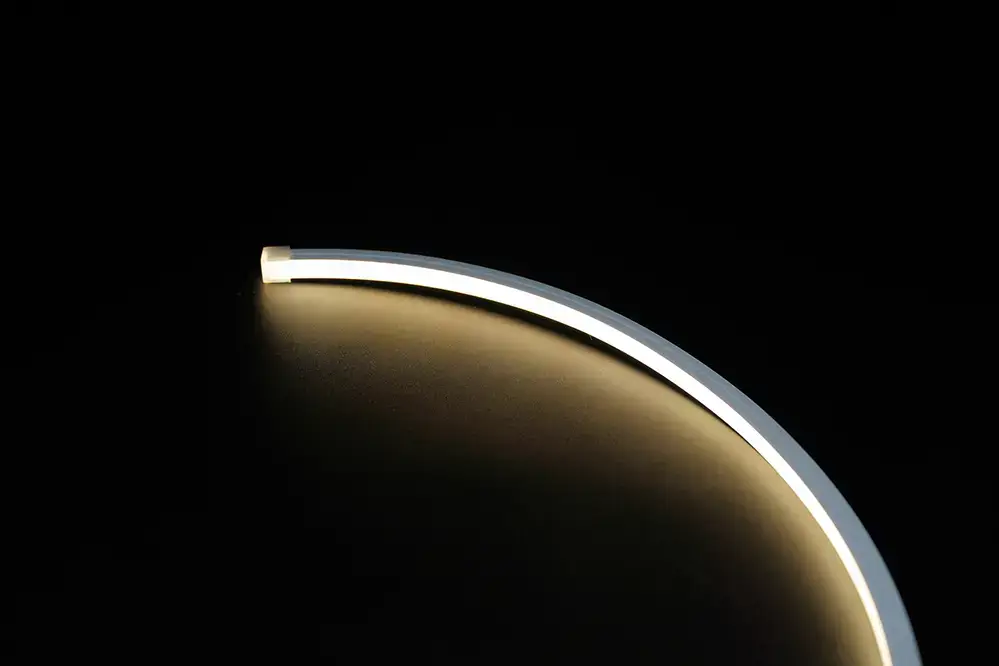When Sarah decided to revamp her backyard for summer gatherings, she never imagined the transformative power of outdoor LED strip lights. From a dimly lit patio to a vibrant, inviting space, the right led strip light with high CRI made all the difference. Understanding how to choose outdoor LED strip lights can elevate any outdoor area, making it both functional and aesthetically pleasing.
Outdoor lighting is not just about visibility; it’s about creating an atmosphere. According to a study by the American Lighting Association, well-designed outdoor lighting can increase property value by up to 20%. This surprising statistic underscores the importance of selecting the right LED strip lights for your outdoor projects.
Ready to discover the secrets to perfect outdoor lighting? This expert guide will walk you through the essential considerations, much like an installation guide, ensuring you make informed decisions that will illuminate your space beautifully and efficiently.
Understanding Outdoor LED Strip Lights
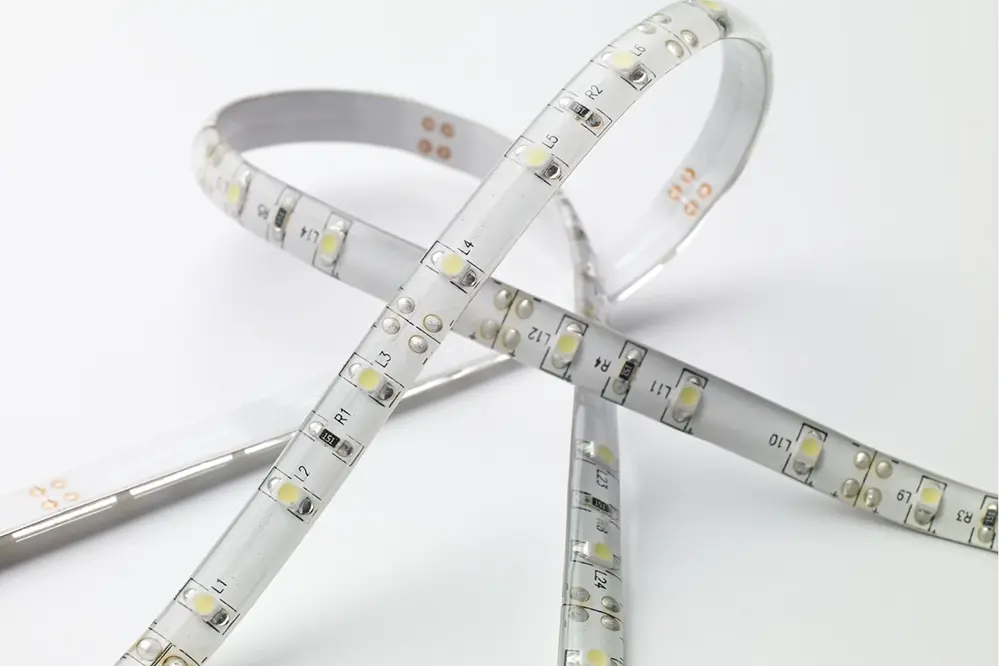
Outdoor LED strip lights serve many purposes, from enhancing aesthetic appeal to providing high led density illumination for safety.
These versatile lights can highlight garden paths, add flair to patio spaces, or provide essential security illumination. The key to maximizing their benefits lies in understanding their unique features. Crucial considerations include their brightness, durability, weather resistance, flexibility, and CRI, among other technical aspects.
Pay attention to their IP rating.
This rating measures their protection against dust and moisture – essential for outdoor installations. Higher IP ratings indicate better protection, crucial for areas exposed to the elements. For most outdoor applications, an IP67 rating ensures your lights can withstand rain and occasional water exposure.
The brightness level, measured in lumens, varies significantly depending on the type and model of the LED strip lights.
Depending on your requirement, you may opt for a lower or higher lumen output. For instance, pathways might require moderate illumination, while outdoor events may need brighter, more vibrant lighting. Properly assessing the intensity and CRI can vastly improve the effectiveness and appeal of your setup.
Assess Your Lighting Needs
Before selecting your outdoor LED strip lights, a moment of introspection is crucial—what exactly are your lighting goals? Whether it’s enhancing landscape aesthetics, providing practical walkway illumination, or creating a festive atmosphere, identifying specific needs will guide your choice. Understanding the purpose behind your lighting project is the first step toward selecting the right strip lights, ensuring your outdoor spaces are both functional and visually captivating.
Determine What You Will Be Lighting
Assessing what you will be illuminating is the cornerstone of any outdoor lighting project. Different areas have unique requirements; a pathway needs different lighting than a patio.
When deciding on the area to light, consider its “purpose core.” This reveals much about the kind of lighting necessary, balancing between functional and aesthetic needs.
Pathways often need focused, practical lighting to ensure safety.
Finally, think about the broader ambiance: should the light emphasize safety, enhance visibility, or highlight decorative elements? Clarifying your aims helps you choose the optimal outdoor LED strip lights. By honing in on these factors, you ensure your outdoor setup is both effective and visually stunning.
Consider the Functionality
When choosing outdoor LED strip lights, consider the functionality that fits your project’s needs best.
Modern LED strip light offers varied functionalities that go beyond mere illumination. Consider dimmability, color-changing capability, and remote control options.
Think about whether smart features like smartphone integration or voice control will enhance your outdoor space’s convenience and flexibility.
Additionally, it’s essential to evaluate the power consumption and energy efficiency of the LED strips. This ensures a sustainable and cost-effective lighting solution.
Choosing LED strips with versatile functionality can elevate both the utility and ambiance of your outdoor environment.
Types of Outdoor LED Strip Lights
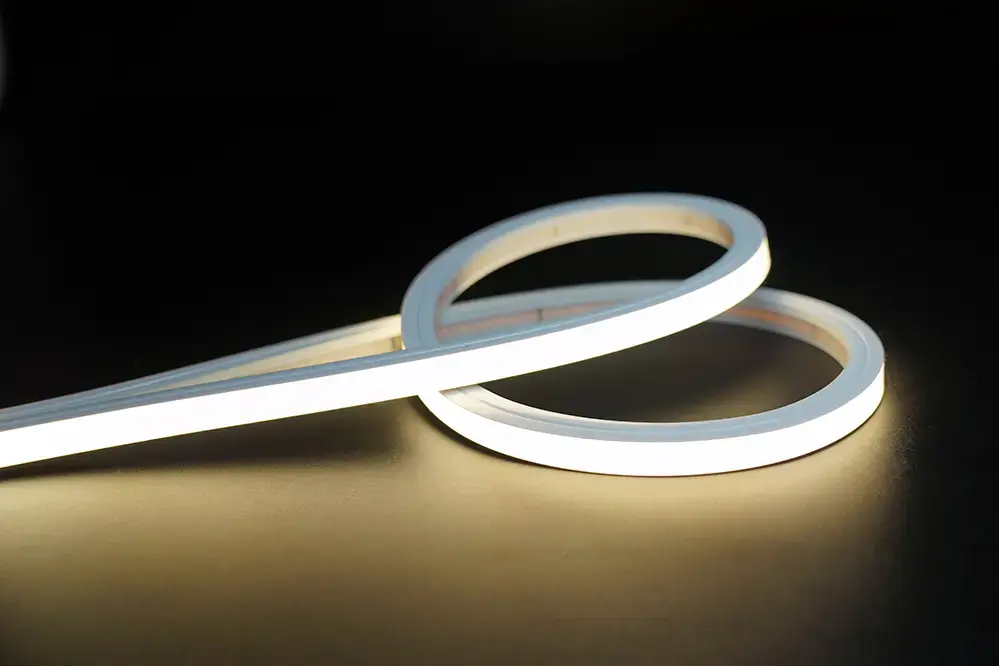
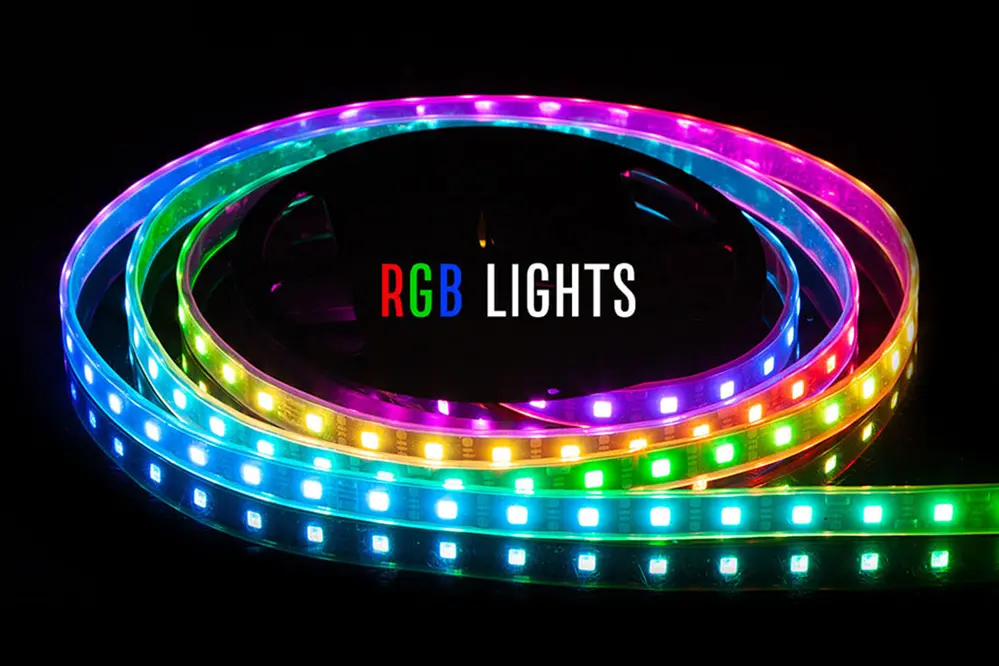
Outdoor LED strip lights come in various types.
One of the most commonly used types is the single-color LED strip. These led strip lights typically emit either cool white or warm white light, providing a consistent and focused glow. Single-color LED strips are ideal for applications where a uniform light is needed, such as illuminating pathways or highlighting architectural features.
Another type to consider is RGB LED strip lights, which offer numerous color options and dynamic lighting effects.
These strips can change colors and often offer numerous lighting modes, including fading, flashing, and strobing. RGB LED strips are perfect for creating dynamic lighting effects in garden areas, patios, or outdoor entertainment spaces.
Waterproof LED strip lights are specifically designed for outdoor use. These strips come with an IP67 rating, ensuring they remain functional even in wet conditions. Meanwhile, smart LED strips offer advanced features like smartphone control and compatibility with home automation systems, making them versatile options for various outdoor settings.
Choosing the Right Color Temperature
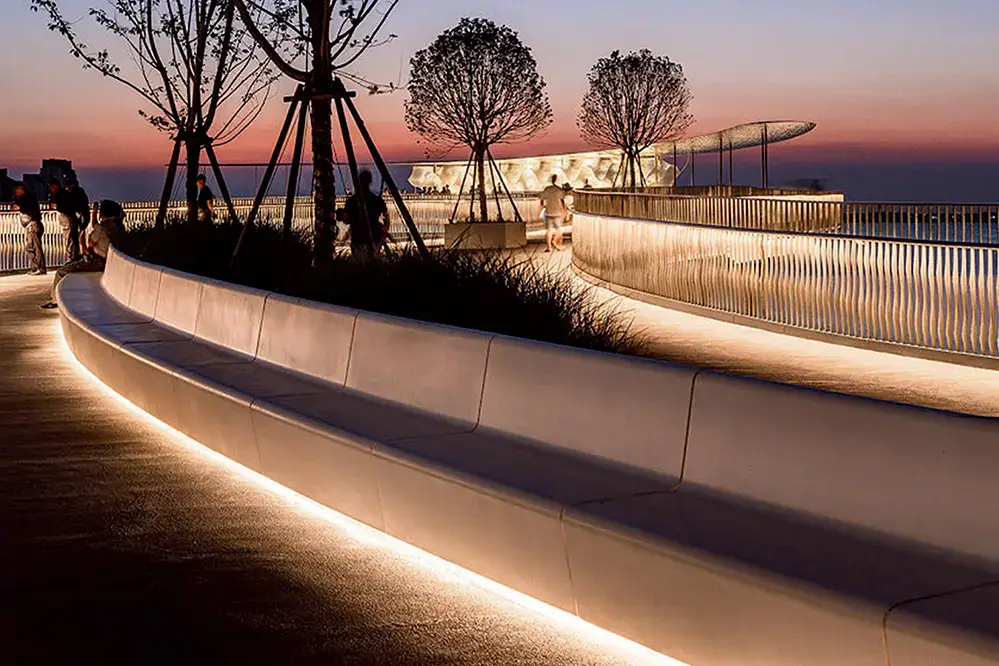
Choosing the right color temperature is crucial for achieving the desired atmosphere and functionality in your outdoor space, directly influencing the lumen output and the overall mood created. Cooler colors, typically ranging from 5000K to 6500K, are perfect for high-visibility areas like driveways and security lighting. Conversely, warmer hues, from 2700K to 3000K, are ideal for creating a cozy and inviting ambiance on decks and patios. By understanding the specific needs of your project, you can select the appropriate color temperature to enhance both the aesthetics and practicality of your outdoor LED lighting scheme.
Adjusting Color for Functionality
Choosing the right color for functionality enhances both appearance and purpose in outdoor lighting.
Since 2016, myriad innovations in LED lighting technology have allowed users to tailor their settings to match specific needs and moods, redefining the outdoor ambiance experience.
When it comes to functionality, adjusting the color temperature or hue of the lights can significantly help in achieving a setting that marries both aesthetics and practicality seamlessly.
Therefore, for a well-lit yet tranquil yard, warmer tones such as 2700K are suitable, while cooler lights around 5000K to 6500K are excellent for driveways or security lighting, promoting safety without sacrificing style.
For special events or festive gigs, multicolored LED lights present an array of possibilities to create dynamic and captivating atmospheres effortlessly.
Single Color vs. Multi-color Options
In deciding between single color and multi-color options, consider the diversity of the space’s lighting requirements.
Since 2016, advancements have revolutionized the field of LED strip lighting, offering a spectrum from single hues to dynamic multi-color displays, each with unique benefits.
If you’re seeking a clean, professional look, single color LED strips excel in applications such as pathway lighting, where consistency and uniformity are key. They provide a steady ambiance without overwhelming the space.
Conversely, multi-color LED strips shine when versatility is desired, allowing users to switch hues and create customizable lighting effects ideal for celebratory events, themed decorations, or even seasonal displays.
Ultimately, the decision hinges on whether one’s priority lies in straightforward, elegant illumination or a vibrant, adaptable lighting experience.
Installation Location and Power Source
Determining the installation location and power source is a vital step when selecting outdoor LED strip lights. Key considerations include the proximity to a power outlet, weather exposure, and ease of access for future maintenance.
Proper location ensures optimal performance and extends the longevity of the lighting solution due to better protection against external elements.
Voltage Considerations: 12V vs. 24V
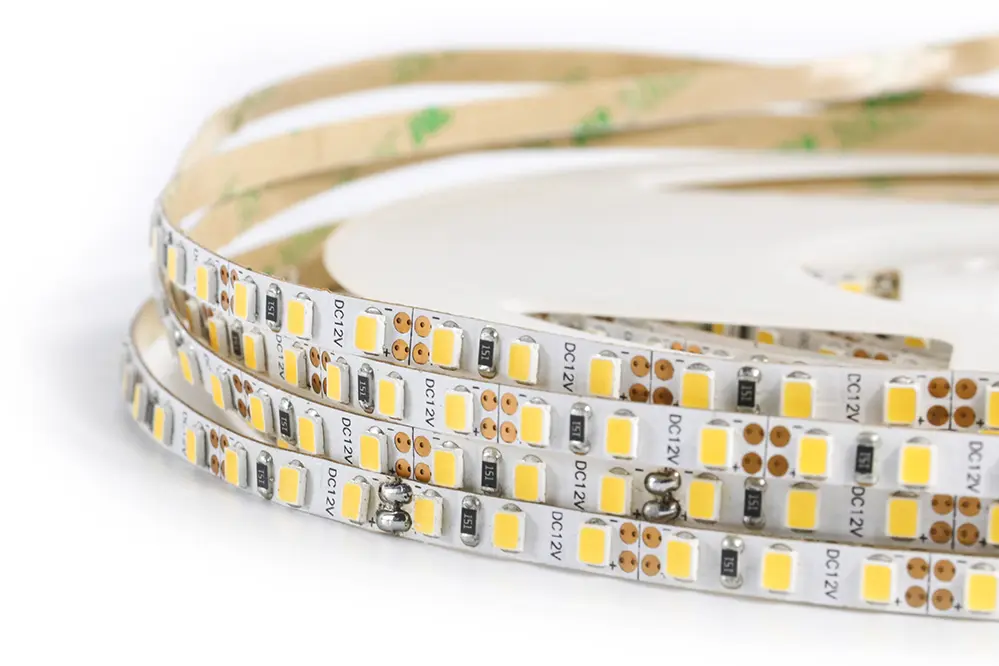
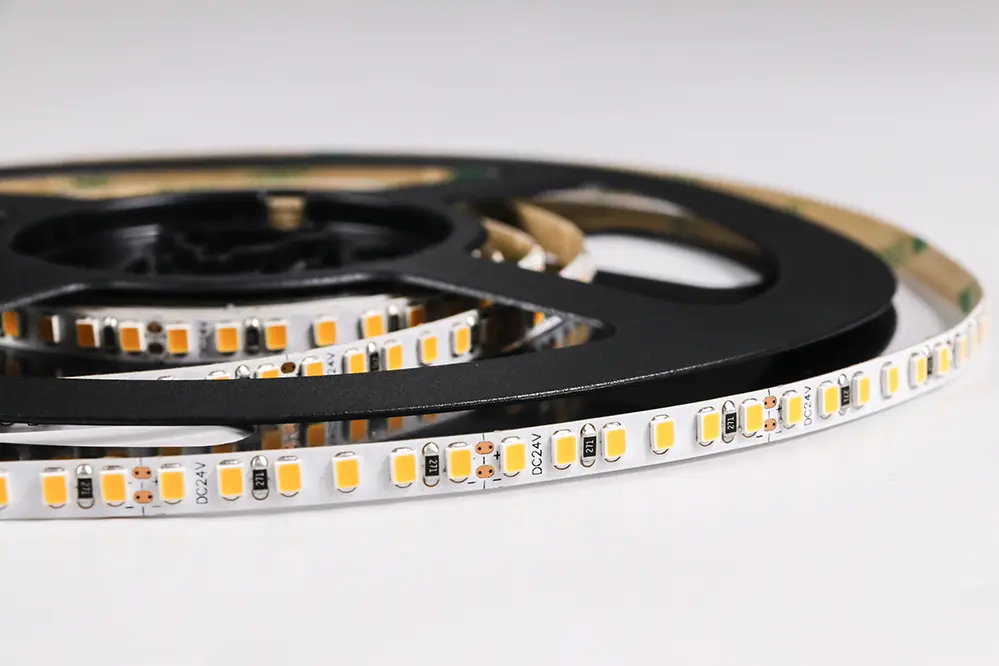
Choosing between 12V and 24V LED strip lights depends largely on the project’s specific needs.
- 12V LED Strips: Ideal for shorter lengths; they are widely available and versatile.
- 24V LED Strips: Suitable for longer runs; provide better efficiency and require fewer power supplies.
- Power Supply Compatibility: Check wattage and compatibility of power supplies for both 12V and 24V options.
- Voltage Drop: Longer strips with 12V can experience voltage drops; 24V mitigates this issue.
- Application Needs: Match voltage requirements to the specific application, considering factors like brightness and length.
A 12V strip light tends to be more flexible and easier to install over small and intricate areas.
Conversely, 24V LED strips are ideal for larger projects requiring longer runs without compromising brightness.
Finding the Right Surface for Installation
Identifying the correct surface ensures a durable and effective installation.
- Smooth Surfaces: Ideal for adhesive backing.
- Wooden Surfaces: Suitable for mounting clips.
- Curved Edges: Opt for flexible strips.
- Hot Glue: Weather-proof alternative.
A smooth, clean surface is critical for adhesive-backed LED strips.
For durability, consider using mounting clips, especially in challenging climates.
Attachment Methods for LED Strips
Adhesive backing offers convenience, a hallmark of straightforward installations, making setup quick and clean. However, adhesives might fail in varied weather. Hence, mounting clips provide robust anchoring, ensuring LED strips stay fixed despite changing conditions. For non-conventional surfaces, hot glue offers an adaptable, weather-resistant solution.
Using Adhesives for Smooth Surfaces

Adhesives can provide excellent stability for LED strips.
When working with smooth surfaces, adhesives are your best friend. Their ability to form a strong bond with the strip lights ensures a seamless installation that remains fixed over time. Moreover, a clean, flat surface maximizes the effectiveness of the adhesive, producing an outcome that is both functional and aesthetically pleasing.
Smooth surfaces work best with adhesive strips.
A smooth, even surface allows the adhesive to grip completely, ensuring the LED strip lays flat without any lifting or warping. Thus, avoiding curves or grooves on the installation surface is crucial to maintain the integrity of the bond.
In summary, choosing a smooth, clean surface and using a high-quality adhesive can ensure your outdoor LED strip lights remain securely attached, providing long-lasting and efficient illumination. Taking these precautions will contribute to a successful and visually appealing lighting project, emphasizing the importance of meticulous planning and execution.
Securing with Mounting Clips
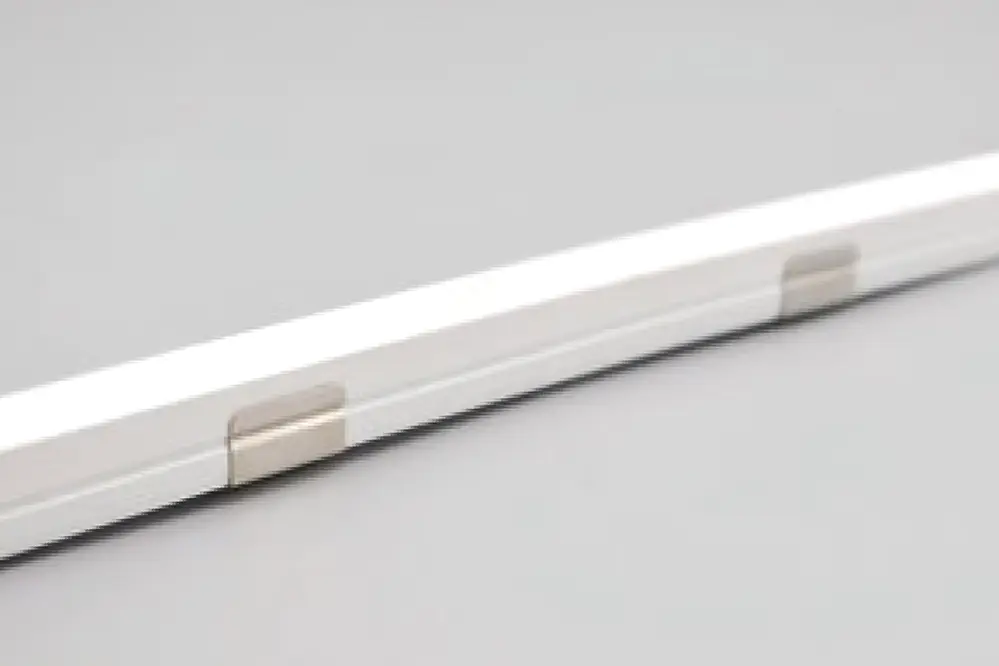
Mounting clips offer a robust solution for securing LED strip lights outdoors. They are particularly useful for installations where adhesives may fail due to environmental conditions.
These clips provide additional stability, especially in areas exposed to heat, humidity, or direct sunlight, thereby maintaining the lumen performance of your LED strip lights. By using mounting clips, they can ensure the strip lights remain securely attached without sagging.
Clips are often made of durable materials like zinc or stainless steel, which resist corrosion and withstand harsh weather conditions, making them perfect for outdoor usage.
Moreover, the installation of mounting clips is straightforward—they simply clip over the strip light and screw into the surface, providing a more permanent and secure attachment. For best results, it is advisable to align the clips at regular intervals along the strip to distribute the tension evenly and maintain a flat, even appearance. Utilizing mounting clips can therefore provide peace of mind, knowing that their LED strip lights are firmly in place, regardless of environmental challenges.
Alternative Attachment Methods
For those seeking versatility in securing their outdoor LED strip lights, alternative attachment methods are worth exploring.
Magnetic backings offer quick, hassle-free installation with solid hold power.
Although limited to metallic surfaces, magnetic strips provide an excellent alternative when adhesives and screws are not desirable. They allow for easy repositioning, enhancing flexibility during installation or future changes without damaging surfaces.
Another innovative approach involves the use of “snap” connectors, which create a secure fit by snapping around the LED strip and attaching through built-in loops. This method provides a stable and adjustable solution, ideal for those needing frequent changes or repositioning. Snap connectors are typically crafted from weather-resistant plastics, ensuring durability in various outdoor conditions.
Calculating Required Length of Strip Lights
Measuring the exact distance, including all curves and corners, where you plan to install your LED strip lights ensures you purchase the correct length. Carefully mark the path to avoid any miscalculations and make sure to consider potential obstacles.
To achieve an accurate estimate of the total length, use a “string method.” This involves laying a string along the intended route, contouring it to match bends and curves. Then, measure the string’s length to determine the length of LED strip needed. This approach ensures precision and accounts for any challenging sections in the installation area.
Short Length Strips
Short length strips are ideal for small-scale lighting projects that require precise illumination.
Since 2016, short length strips have gained popularity for various applications, such as accentuating specific outdoor elements or creating focused light spots in confined spaces.
Typically available in lengths of five to ten feet, these strips are perfect for patios, garden paths, or staircases, where extensive lighting is unnecessary.
Moreover, short length strips provide flexibility in design, allowing them to be easily maneuvered around intricate layouts or tight corners, enhancing their utility in creative lighting solutions.
These versatile strips ensure that even small areas can have the perfect lighting setup.
Long Reel Options
For larger outdoor lighting projects, long reel options offer flexibility and cost-effectiveness.
- 165 Feet Reels – Ideal for extensive areas like parking lots, long pathways, or large-scale festival decors.
- 100 Feet Reels – Suitable for medium-sized applications such as sizable backyards or commercial outdoor spaces.
- 50 Feet Reels – Perfect for residential use, lighting up larger patios, gardens, or pool areas.
Long reels can be cut to custom lengths, making them adaptable to various project dimensions.
These reels come in 24V options, ensuring consistent power delivery even over longer distances.
How to Choose Outdoor LED Strip Lights
Selecting the right outdoor LED strip lights demands a thoughtful approach to various factors. Each specific requirement has a significant impact on the final decision.
Understand the unique needs of your lighting project.
Consider the environment and its exposure to elements like rain, dirt, and fluctuations in temperature. This ensures the longevity and functionality of the LED strips, solidifying their worth as a reliable lighting solution.
The correct voltage and wattage align with the type of illumination desired. This enhances the efficiency of the power supply, confirming that the chosen LED strips will provide the desired brightness without overwhelming energy consumption. Hence, it’s crucial to align technical specifications with the practical demands of your project.
Where to Buy Quality Outdoor LED Strip Lights
Choosing where to buy quality outdoor LED strip lights is critical, and Unitop provides a trusted solution for those discerning customers looking for excellence.
Their commitment to superior quality ensures that every project milestone is met with outstanding results.
Strategically, Unitop provides outdoor LED strip lights that cater to variable voltages, densities, and lengths, establishing their product versatility.
Moreover, our IP65~IP68 rating significantly guarantee durability and robustness against weather conditions.
Customers will appreciate an extended warranty of up to five years, which underscores their confidence in product longevity and customer satisfaction.
Additionally, a seamless return policy and expert lighting consultation ensure that any complexities can be navigated effortlessly.
Conclusion
Choosing the right outdoor LED strip lights requires evaluating several key factors to ensure both practicality and aesthetic appeal. Start by identifying the space to be illuminated and determining the specific type of lighting needed. Next, decide on the installation location and select the appropriate material for secure attachment. Finally, calculate the necessary length of strip lights for your project. Thorough planning and informed choices are essential for a successful outdoor lighting project, and with Unitop, effective solutions are always within reach.
